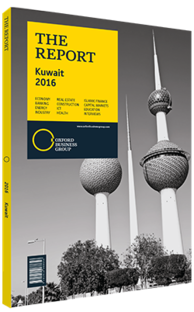Khaled Al Mashaan, Vice-Chairman and CEO, ALARGAN International Real Estate: Interview

Interview: Khaled Al Mashaan
How would you assess the balance between mid-market and upper-market development in the sector, and are investors responding?
KHALED AL MASHAAN: The real estate sector is vast, with its many sectors including commercial, residential, industrial, retail and warehousing. In terms of the middle and upper segments of the residential market, the aim of the sector is to strike a healthy balance between them. The central issue in the residential market is that it’s dominated by the price of land which is exorbitantly expensive and faces increasingly limited options. The government essentially monopolises the welfare sector – or the middle-market segment – which has suffered severe shortages and now has a deficit of over 100,000 homes.
With all this being said, the only area for the private sector to navigate in is the upper-market segment, which is growing and correlates closely with the continued growth of the middle-market segment. However, once more, the sector has not found its equilibrium, with supply being far outstripped by demand, in turn driving up prices. The least expensive purchase in Kuwait is approximately $1m, a large sum without the most satisfying returns.
In the corporate segment, there is excess supply off the back of weak demand. To increase yields on investment, investors have shelved projects in order to balance the market. However, the retail segment is healthy, with high rental values to the tune of anywhere between KD20 ($66.20) to KD50 ($165.40) per sq metre monthly. The main reasons for this are the sophistication of the retail segment, the high purchasing power of citizens and land scarcity.
In what ways are volatile commodities prices affecting raw material supplies for the industry?
AL MASHAAN: Lower raw material prices are having a positive effect Three or four years ago a tonne of steel was KD400 ($1323); today, this figure has been slashed by a third. The same applies for cement, wood and other materials. In addition, transport costs have become cheaper on the back of lower oil prices.
As the costs of raw materials have plummeted they have been offset by the tightening of labour laws, particularly in the form of unskilled labour coming from South Asia. However, semi-skilled labour or contractors, such as carpenters, have become scarcer as this segment typically comes from Iraq or Syria. With these two respective countries in turmoil, their services have become scarcer and more expensive.
What measures can developers implement to bring about green building solutions, and would government legislation in this regard help?
AL MASHAAN: To implement and incentivise green solutions they have to make fiscal sense. Efficiency and sustainability only come into play when one is able to depreciate energy costs over a shorter time. When building an energy-efficient home, 15% is added to the baseline cost of the home. This baseline cost has gone down from 30% to 15%, which shows the development in the market place – a big positive. If the cost of a home is $1m, the baseline cost increases by $150,000 to make it energy-efficient. If you save 30% on energy costs per annum, then over time the return on investment will make sense as operational costs are lower than with a non-efficient home.
The government needs to play a larger role in incentivising environmentally friendly practices in the home, particularly in terms of utilities consumption. At the moment utilities are subsidised, but if the government were to charge citizens on usage, I think we would see a dramatic shift in consumption and adoption of green solutions. One initiative that the Kuwait Foundation for the Advancement of Sciences is enacting is the installation of solar panels in 150 homes to show the public that savings will make fiscal sense in the reduction of utility costs over time.
You have reached the limit of premium articles you can view for free.
Choose from the options below to purchase print or digital editions of our Reports. You can also purchase a website subscription giving you unlimited access to all of our Reports online for 12 months.
If you have already purchased this Report or have a website subscription, please login to continue.

